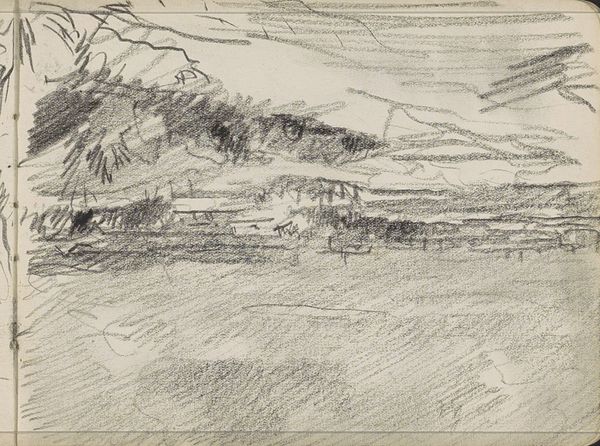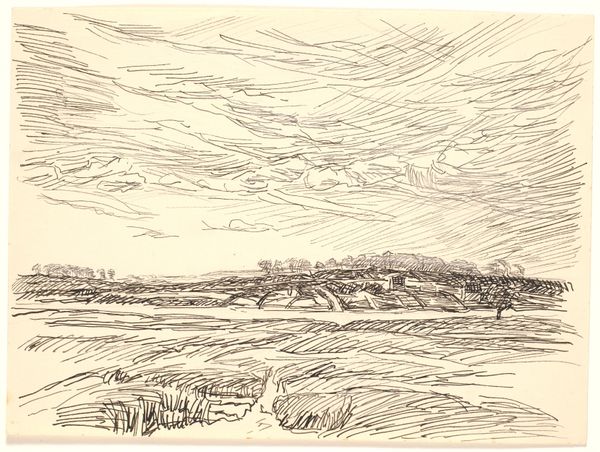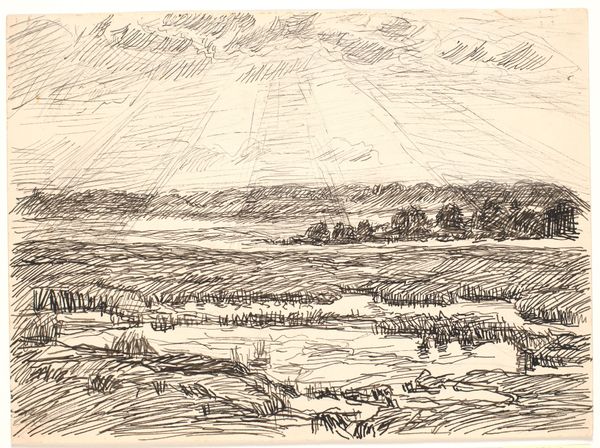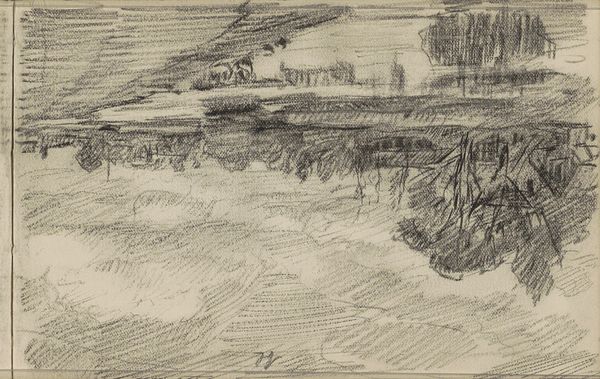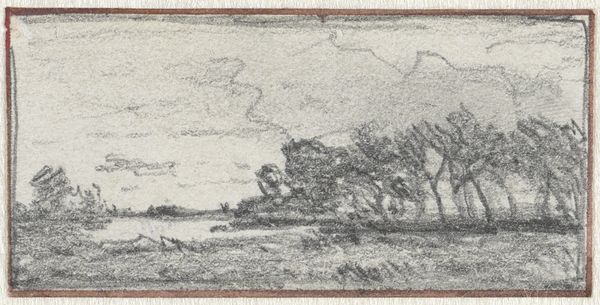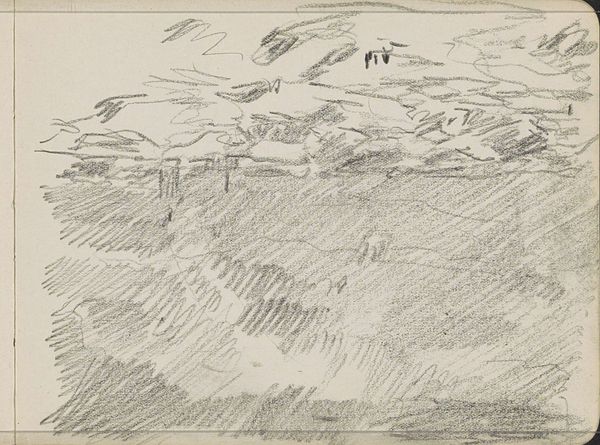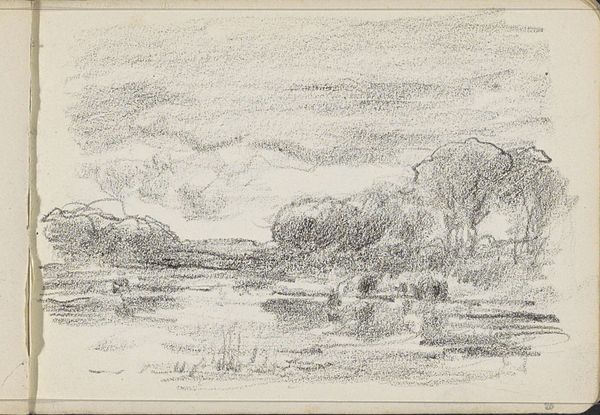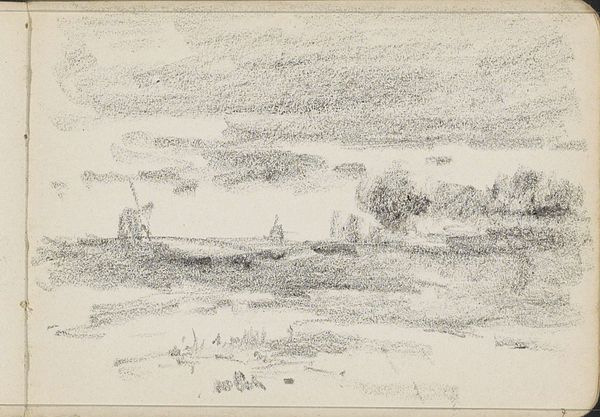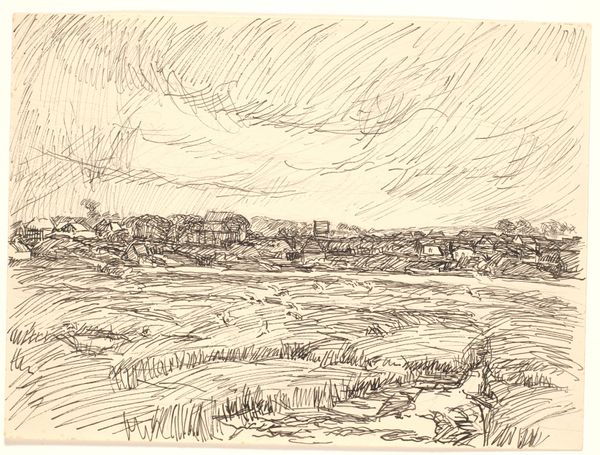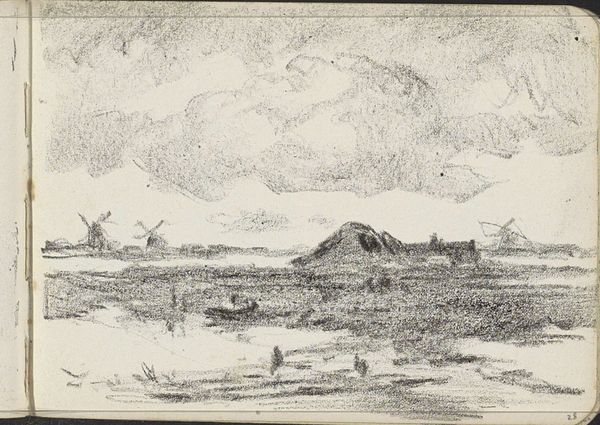
drawing, pencil, graphite
#
drawing
#
ink drawing
#
pen sketch
#
pencil sketch
#
landscape
#
pencil
#
graphite
#
realism
Dimensions: 4 3/8 x 7 1/2 in. (11.11 x 19.05 cm)
Copyright: Public Domain
Curator: This is "Sketch made on Indian Reservation" by Walter Shirlaw, likely created sometime in the 19th century. It’s a drawing using pencil and graphite. What's your initial reaction? Editor: Somber. The muted tones of the graphite lend a melancholic air to the vast landscape. The sky, though full of clouds, feels heavy, oppressive almost. Curator: Yes, it captures a specific moment, but through the artist's choice of materials—pencil and graphite—Shirlaw manages to invoke this feeling of immediacy and intimacy. He probably worked quickly. It wasn't a formal commission. We have a record, almost an artifact, of his presence there. Editor: That presence is what I find so ethically fraught. This is labeled “Sketch made on Indian Reservation." This implies observation from an outside perspective. A 19th-century artist sketching land occupied by Indigenous people, surely done within the historical context of settler colonialism and displacement. It positions the artist as a viewer, perhaps a surveyor, and the Indigenous land as an object. Curator: Precisely, which is why I think analyzing his method, Shirlaw’s method becomes important. The sketch's loose, unfinished quality—you can see the hurried lines and the visible erasure marks. It reminds us that this isn't some heroic landscape painting romanticizing the frontier. It suggests a process of observation, recording. It shows his perspective in time. It brings forth important cultural discussions. Editor: But can we truly divorce the medium from its message? Even if the artist’s intention was simply observational, the drawing still exists within a power dynamic, capturing Indigenous land and life through a colonizer’s lens. What materials were readily available? Whose narrative is being constructed and at whose expense? Curator: It certainly pushes us to think critically. About the choices artists make. About how those choices reflect the socio-political realities of their time. Editor: It is a good reminder to constantly contextualize artworks within the larger narratives of history, power, and representation. Curator: A sketch, seemingly simple, can hold such profound implications when viewed through different perspectives. Editor: Absolutely. I appreciate the opportunity to deconstruct it from a variety of approaches and to explore the work and labor embedded in its creation.
Comments
No comments
Be the first to comment and join the conversation on the ultimate creative platform.
